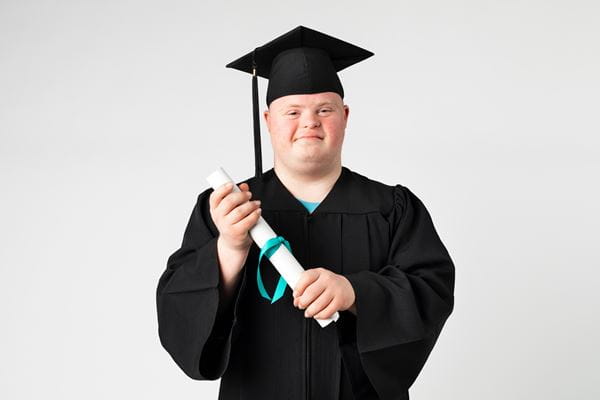Written by Cindy Hill, DNP, RN, CPN, CNE, Nursing Trainee in the Indiana LEND Training Program
Every school year, over 49 million children in the United States spend more than half of their day in the school setting. More awake hours are spent in school than the child has in the home. The school setting offers a child the chance to learn to read, to write, to grow socially as well as physically. When the child turns 18, they reach many milestones. They are considered an adult and graduate. Another change is regarding health care. They will transition from a pediatric centered care model to an adult care provider.
This growth and transition to adult life and adult medical care is not as easily attained when the child has a special health care need. Children with complex medical diagnoses such as diabetes, down syndrome or autism attend school just like their peers, yet due to barriers in health, often do not transition to meet goals of independence in health care by the time of their 18th birthday.
Current statistics reveal that 25% of families in America have a child with a special health care need. This equates to greater than 750,000 students with a special health care need each year transitioning to adulthood, yet 83% do not meet their goals. These goals may include job attainment, attending college, independent housing, or even taking daily medications. Just as a child growing and learning takes years to attain high school graduation, the health care transition process takes years for implementation and should be initiated when the child is 12.
Barriers that prevent achievement of these goals include many things. Often, there is a lack of time in the busy pediatric care office to communicate with the child and family on the need for transition. A 15-minute visit does not afford this time. Also, the provider and/or parent may not understand the need for the early transition process. Often, a barrier is that extra staff are needed to assist families with details such as transition questionnaires for goal setting. Lack of funding for staff salaries can hinder this assistance. Continuation of Covid has complicated the process as well.
One asset the provider does have is to coordinate care with the multi-discipline team in the school setting to assist the family in achieving transition goals. The public-school setting utilizes a united approach to aide youth with special health care needs in meeting goals. This team includes: the child, parents, teacher of record, special education teacher if needed, nurse, counselor, speech/physical therapists as well as psychologist. Pediatric providers can have interprofessional collaboration by writing in transition goals in the IEP (Individualized Education Plan) for the child. The IEP is reviewed yearly and is specific to the child’s needs. Keeping medical orders up to date in the school clinic also equips the school staff for better health outcomes for the child.
Providers that are consistent in keeping an open dialogue with the school team can make an impact on the transition process for children and their families. While there will still be education needed at the provider clinic visit, many transition goals and steps can be worked on in the school setting to increase readiness for the child’s move to adult care at 18. Although the school setting is a different entity than the health care setting, the pediatric provider can partner and work alongside to improve communication and continuation of health care that will hopefully improve transition success for the child with special health care needs.

